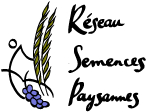Niveau juridique : Union européenne
Texte de la question :
« Xylella fastidiosa is a bacterium that lives and reproduces in the xylem sap of its host plant, which it can seriously affect.
This bacterium has caused serious agricultural damage and its spread threatens the survival of many types of plant and the livelihoods of the farmers that tend to them.
In December 2018, the bacterium was detected for the first time in Tuscany — in the municipality of Monte Argentario to be precise.
Given how dangerous this plant pathogen is, and how close Tuscany is to the infected areas of Apulia, France and Corsica (under 4 hours by ferry from Livorno) the bacterium is a potential threat to crops grown in Tuscany, especially olives, and were it to spread this would have devastating effects on the ground and for the regional economy.
What actions are being planned to tackle the spread of this invasive bacterium?
What can be done to fund measures to prevent the spread of this parasite in Tuscany and ensure its biological control? »
Réponse par Mr Andriukaitis au nom de la Commission
« EU emergency measures laid down in Commission Implementing Decision (EU) 2015/789 (1) are in place to eradicate or, where this is not possible, contain the pest from current outbreak areas (2) with the aim to prevent further spread into the Union territory.
The EU measures also include movement and import restrictions for specified plants, the organisation of annual official survey campaigns in Member States, as well as an awareness campaign towards the general public, travellers, professional and international transport operators concerning the threat of Xylella fastidiosa.
Those measures are based on the precautionary principle, taking into account the scientific opinions of the European Food Safety Authority, the severity of the pest and the absence of any effective treatment solution able to cure diseased plants in open field conditions.
EU grants are available to Member States for the implementation of monitoring programmes at national level and EU emergency measures for demarcated areas within the Plant Health Directive 2000/29/EC (3) and the co-financing Regulation (EU) No 652/2014 (4). Within the same legal framework, EU funds are also available for compensating operators for the value of the destroyed plant material.
Lastly, a series of Commission’s audits are currently taking place to assess the import controls on plant health carried out by Member States. The outcome of those audits is published on the relevant webpage of the Directorate General for Health and Food Safety (5).
(1) Commission Implementing Decision (EU) 2015/789 of 18 May 2015 as regards measures to prevent the introduction into and the spread within the Union of Xylella fastidiosa, OJ L 125, 21.5.2015, p. 36‐53
(2) A list of demarcated areas established in the Union is available at the relevant webpage of the Health and Food Safety Directorate General.
(3) Council Directive 2000/29/EC of 8 May 2000 on protective measures against the introduction into the Community of organisms harmful to plants or plant products and against their spread within the Community, OJ L 169, 10.7.2000, p. 1‐112
(4) Regulation (EU) No 652/2014 of the European Parliament and of the Council of 15 May 2014 laying down provisions for the management of expenditure relating to the food chain, animal health and animal welfare, and relating to plant health and plant reproductive material, amending Council Directives 98/56/EC, 2000/29/EC and 2008/90/EC, Regulations (EC) No 178/2002, (EC) No 882/2004 and (EC) No 396/2005 of the European Parliament and of the Council, Directive 2009/128/EC of the European Parliament and of the Council and Regulation (EC) No 1107/2009 of the European Parliament and of the Council and repealing Council Decisions 66/399/EEC, 76/894/EEC and 2009/470/EC, OJ L 189, 27.6.2014, p. 1‐32 (5)ec.europa.eu/food/audits-analysis/audit_reports/index.cfm »
Lien vers la page de la question ici
